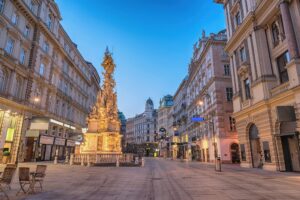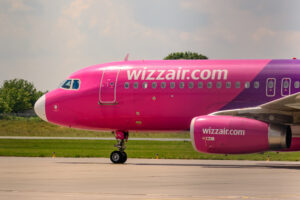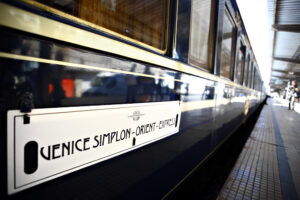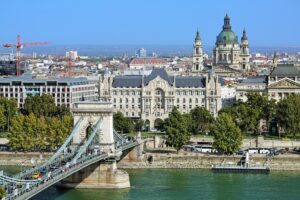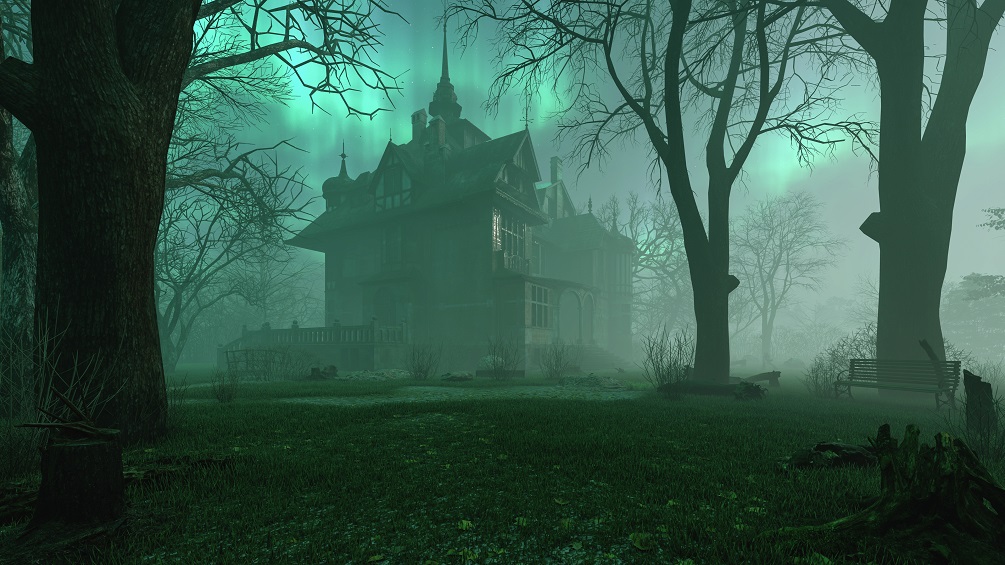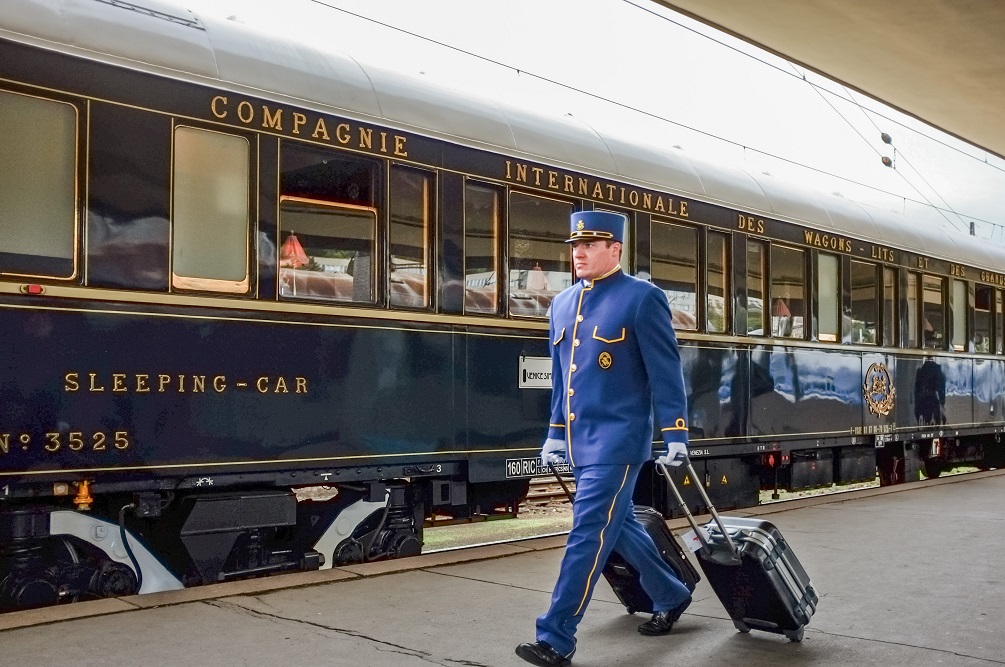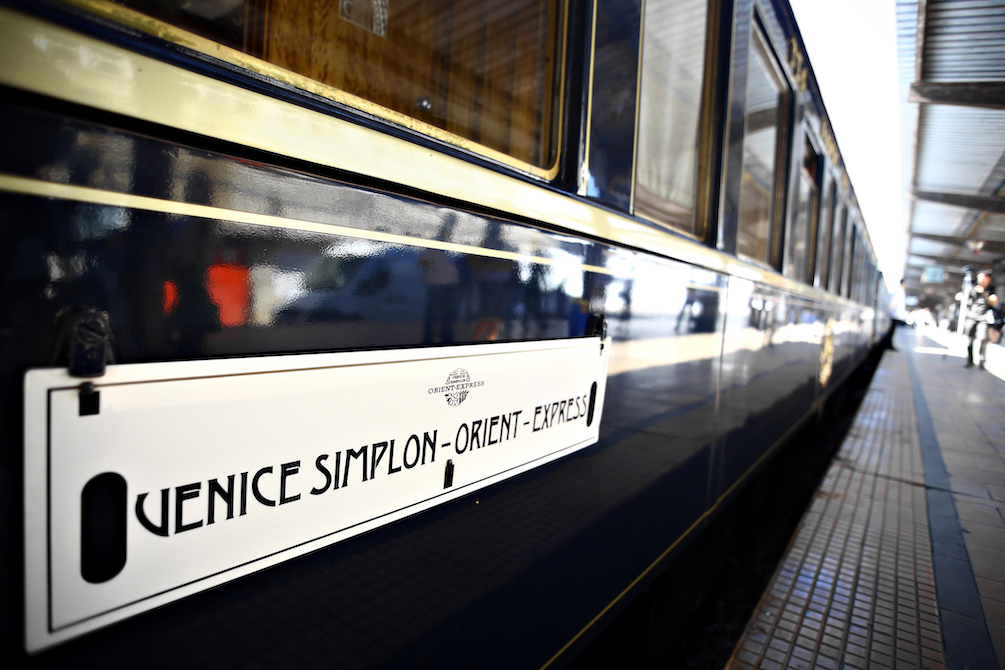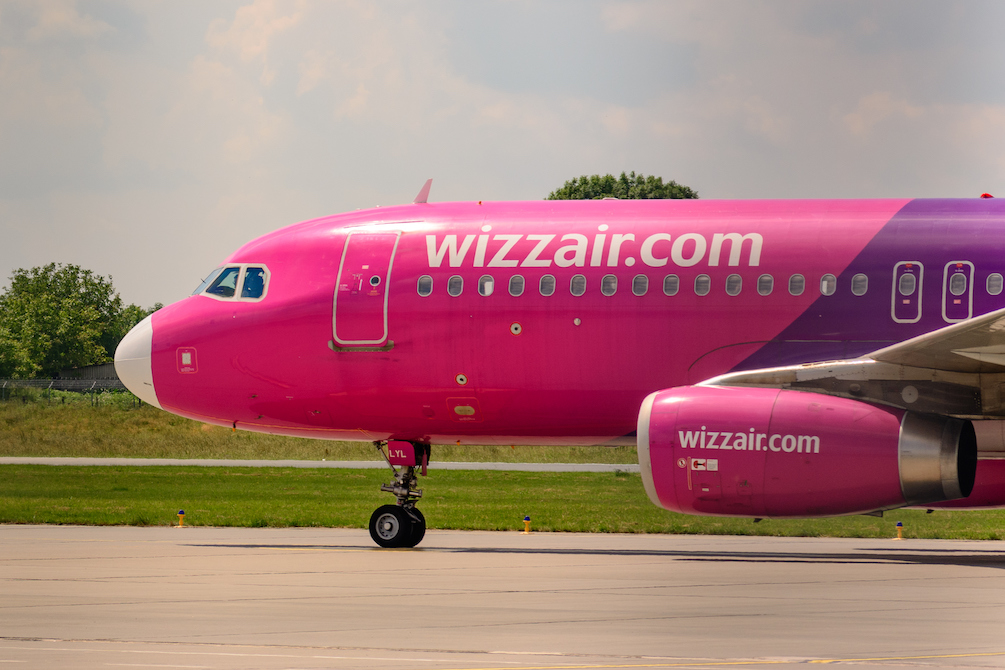Czech Republic
With a fascinating Czech culture, castles, and palaces, tradition and culture, and generous servings of beer, the Czech Republic is modern and historic in equal measure.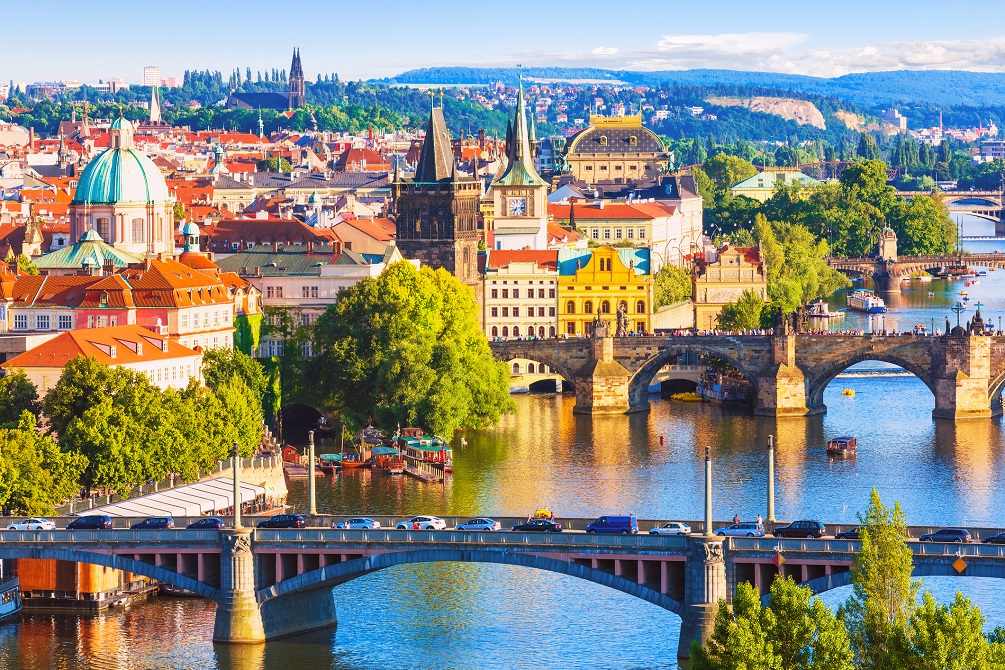
When you travel to the Czech Republic, begin your journey from Prague, one of Europe’s most captivating cities. Prague takes you back 500 years, as it unfolds Gothic architecture that can be traced back to the medieval era, with ancient castles, spires, and a vibrant city center.
Its location in Europe’s center has witnessed decades of warring armies, decadent dynasties, and plundering tribes. The castles, palaces, and chateaux are a legacy of this colored past. The sheer variety of these structures is stunning and embellished with opulent furniture.
For a taste of folk culture, visit Moravia and South Bohemia, especially during summer. You’ll come across traditional attire, folk song, and dance.
Beer lovers will feel like they’ve stepped into a goldmine. Apart from the famous Pilsner Urquell, the world’s best brews are produced in the Czech Republic. With traditional brewing practices being re-adopted, Czech pubs now have a variety of local brews on offer.
Some must-see attractions include the St. Vitus Cathedral which is over 600 years old, the Charles Bridge, the Prague Castle, the Prague Jewish Museum, The Strahov Library, and the Old Town Hall.
Other great locales to visit are Karlovy Vary, Plzen, Cesky Krumlov, Brno, Tabor and Mikulov.
The Czech Republic’s charms spread to its rural and urban areas alike. From leisurely walks to challenging hikes, strollers and hikers have plenty to explore with nature trails that take you through age-old castles and quaint churches. The best part is that refreshment is always close by, whether in the form of a foamy beer, a bowl of goulash, or a scrumptious Trdelnik roll.
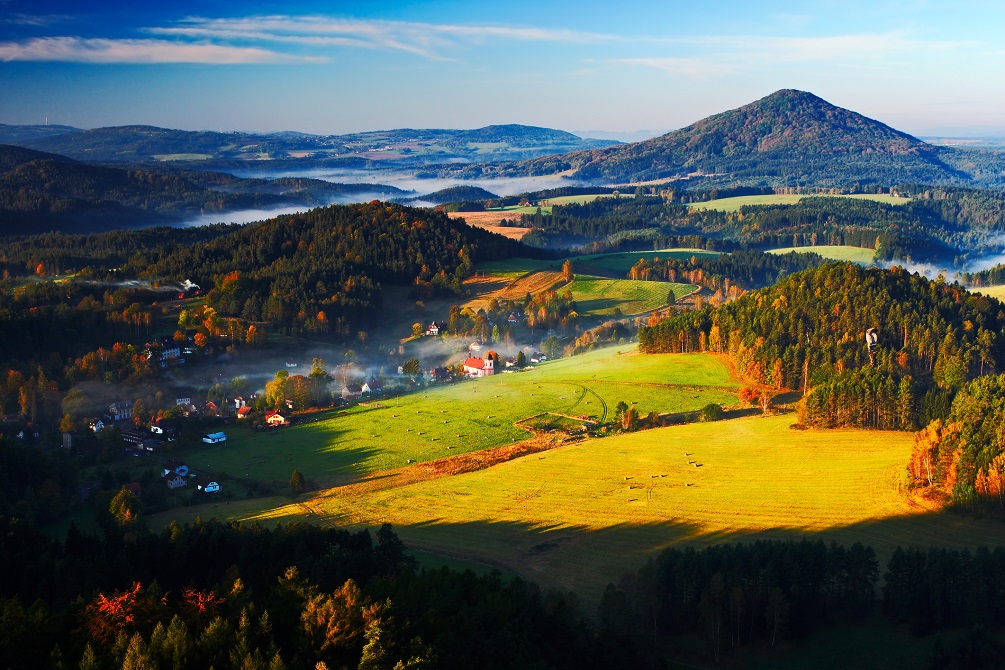


The Czech Republic is located right in the center of Europe. It is landlocked and is bordered by Slovakia, Austria, Poland, and Germany. It spans over 78,864 sq km and its capital, Prague is the biggest city in the country.
Its location is strategic and is the convergence of some important land routes in Europe. Additionally, the Moravian Gate is the military connection point between the Danube and the North Eastern Plain.
Hills and mountains are dominant across the country. Waterways like the Elba and the Danube flow through the Czech Republic. The landscape is characterized by wide valleys, flowing rivers, dense forests, stalactite caves, and woodlands. It is also rich in restorative mineral waters and healing springs.
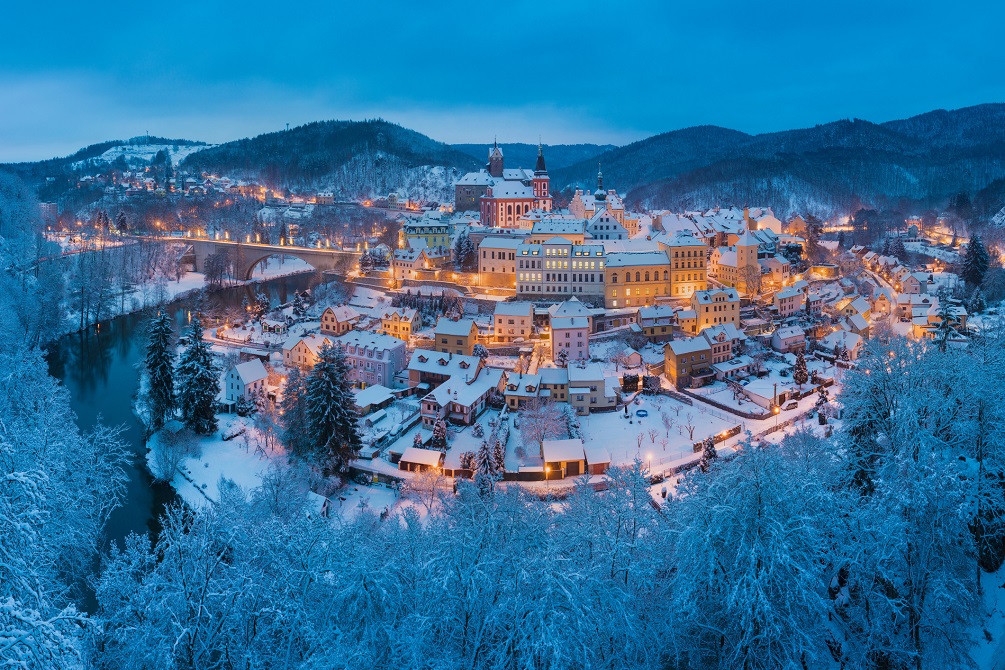


Most of the Czech Republic experiences a continental and humid climate, with warmer summers and chilly winters. In January, temperatures range from 22F to 32F, while July averages a low of 56F and a high of 76F.
Its rainfall is distributed throughout the year and the humidity is around 80 percent. It snows lightly during January and February, but the high humidity in the air makes the winter cold piercing.
November through March experiences fewer hours of daylight and is somewhat bleak when combined with fog. From mid-October until early April, the days are darker and visibility is low. Hence, drivers are required by law to drive with their headlights on, even during the day.
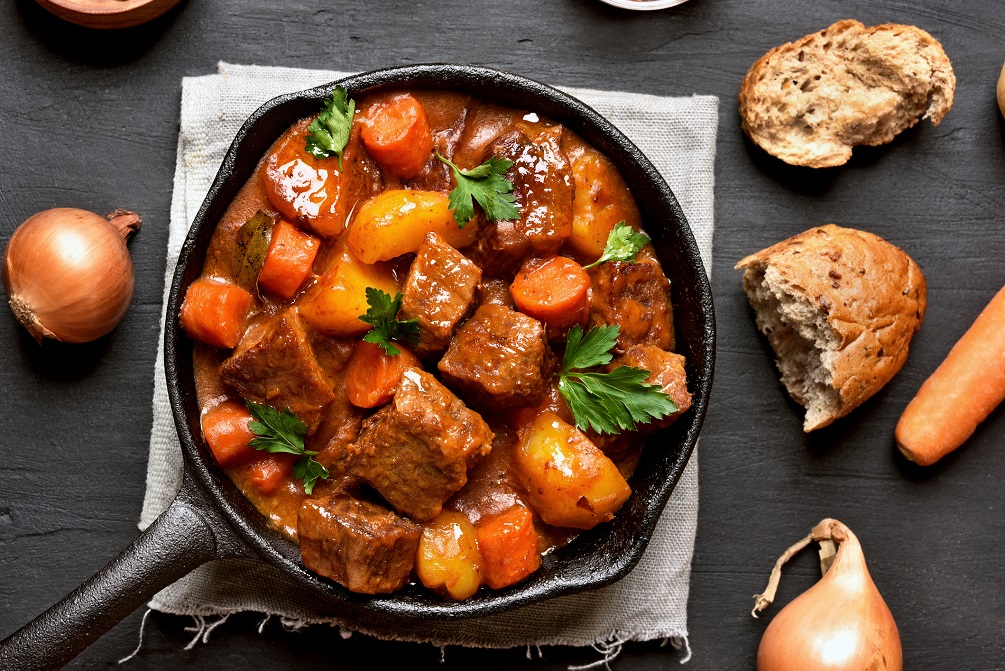


Czech food requires a re-evaluation of taste and mindset. With an abundance of fat and grease in most dishes, it isn’t food for the faint-hearted. Located at the crossroads of Europe, the cuisine reflects the influences of its bordering countries.
With imports like a roast goose from Germany, schnitzels from Vienna, and pickles and sour cream from the East, Czech food is heavy but not spicy or laden with herbs. The table is always full with generous servings of meat and starchy dishes.
Veprova s knedlikem a se zelim is one of the Czech staples. It is typically a roast pork dish accompanied by dumplings and sauerkraut. Another classic is the Svickova na smetane, which is beef sirloin in cream sauce. Svickova is a sauce created out of vegetables and cream and made dense with roux.
Goulash, also called gulas is consumed in plenty and is almost always served with a side of dumplings, garnished with onions.
If you need a quick pick-me-up, grab the Bramborak, a kind of potato pancake seasoned with garlic. The parek v rohliku which is essentially a hotdog can be easily picked up from kiosks that dot the country.
For drinks, you can’t leave without trying Czech beer brands like Pilsner Urquell and Budweiser Budvar. Wine aficionados will like the Moravian wine varietals and the wine that comes from the Melnik vineyards.
Desserts are sweet and full-flavored. Spoon up some Mazanec which is a sweet Easter bread created with a dough that is kneaded with lemon zest, raisins, and rum. Sink your teeth in some soft Livance, which are circular and soft crisp pancakes.
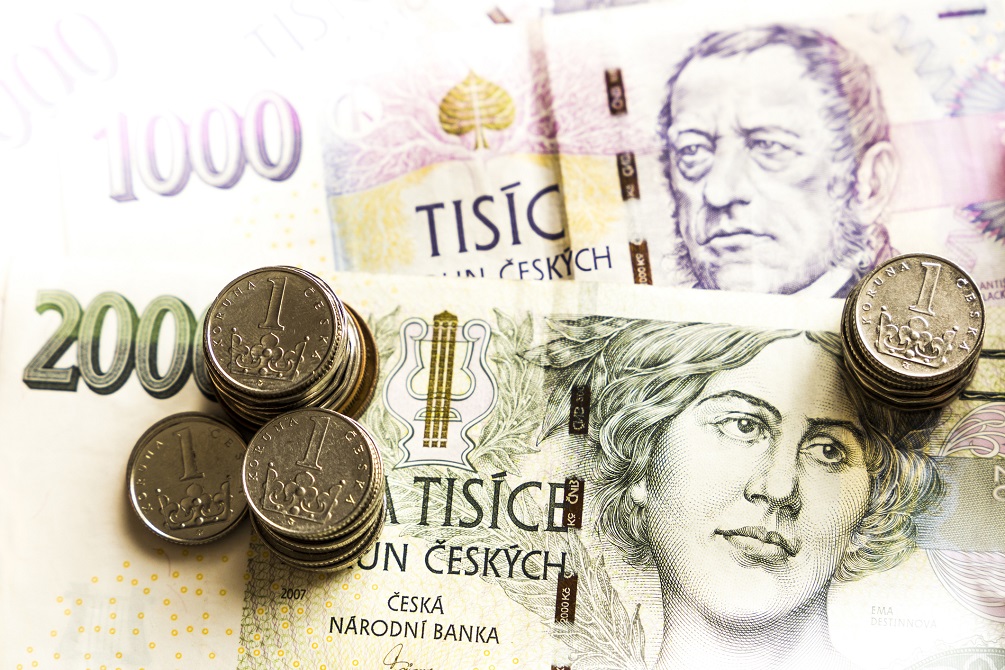


The Czech crown (koruna), abbreviated as Kc, is the currency of the Czech Republic. 100 hellers comprise one Czech crown, while the ultimate rate is always rounded off to the nearest value.
When you travel to the Czech Republic, you can use debit and credit cards quite easily, particularly in cities like Prague, Ostravo, and Brno.
Visa, Mastercard, and American Express are accepted at stores and for withdrawals at ATM machines. Cards are accepted in hotels, superstores, stations, and restaurants in Prague. However, smaller eateries and bars accept cash only.
The main language spoken in the Czech Republic is Czech and it is also its official language. The language is West Slavic and bears influences of Latin and German. The language has similarities to the Slovakian language and many English words have been adapted into the Czech language that is spoken today.
The language is quite difficult to learn, and not used anywhere else in the world. But you won’t experience difficulties, at least in Prague because the people there can communicate in English.
The Czech language used in modern times is intriguing, rich, and complex. There are numerous ex-pats who live in Prague, totaling around 200 thousand foreigners, from Ukraine, Russia, Vietnam, and Slovakia.
Most Czechs can speak fluent English, while the other popular languages spoken are German and Russian.
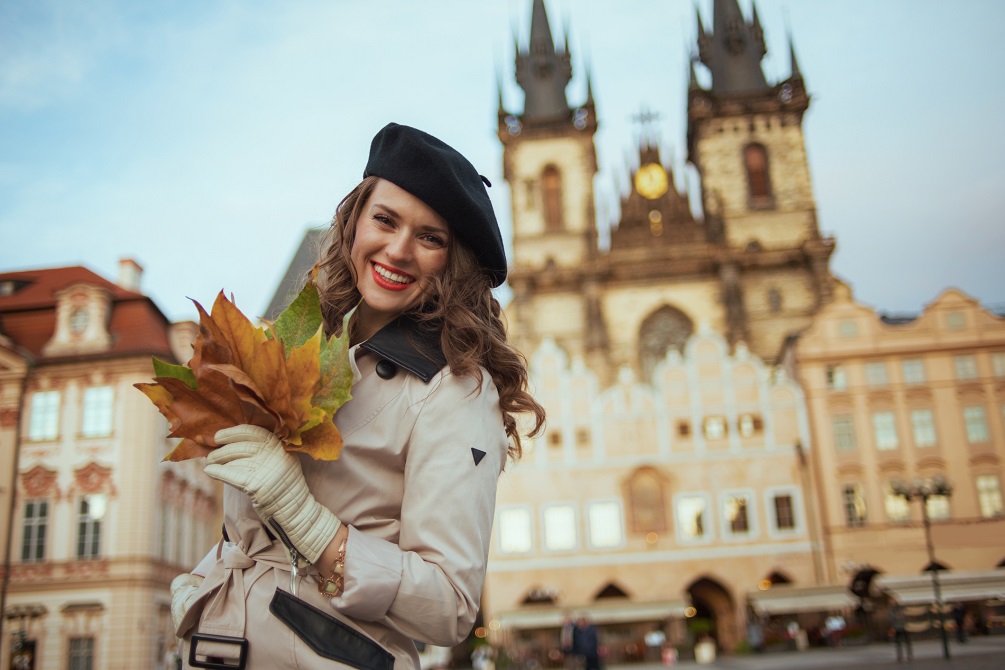


When you travel to the Czech Republic, pack some smart casual clothes. T-shirts and jeans are acceptable, with the majority of locals and tourists opting for dark blue or black denim.
Don modest attire while visiting the churches and if you want to stroll the streets or eat off-street carts, carry a jacket or sweater because it can get chilly. You don’t need to carry swimwear if you are only traveling to the cities.
Choose flatter shoes instead of heels as most of the roads are cobbled. Some nightclubs don’t permit sneakers. The weather can be unpredictable, so layering is advisable. The summer months of June, July, and August are hot, so carry sunglasses, a hat, and sunscreen.
The cooler months of November, December, January, and February are chilly and snowy, so carry a thicker coat, gloves, and ear-muffs.



In the Czech Republic, family values and family are given prime importance. The Czechs are fairly private people unless you are known to them. A sense of formality prevails in their day-to-day interactions. Once you get closer to the Czechs, they may tend to open up a bit but usually, they are never loud or overly emotional.
While they are always reverent and polite, they are on a first-name basis only with relatives or friends. Most greetings are formal and involve a handshake.
While visiting, you may give flowers but always odd numbers and never 13 as it is considered ill luck. If you are visiting someone’s home, dress decently, arrive on time, and avoid discussing business as Czechs tend to separate their business and personal lives.
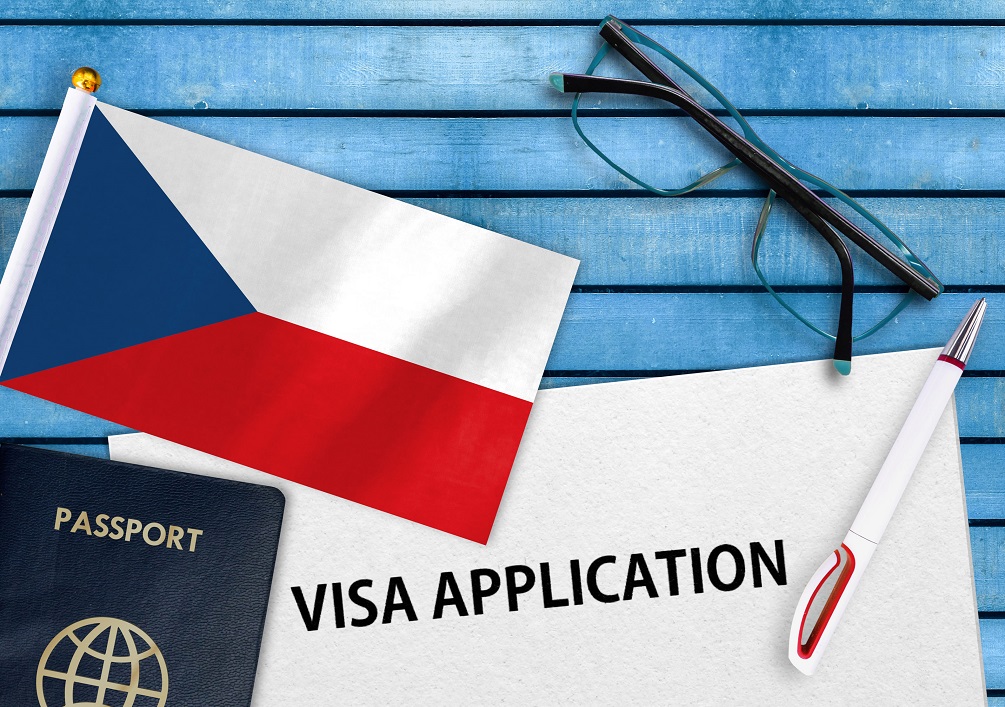


British citizens holding a UK passport don’t need a visa to travel to the Czech Republic. There are quite a few non-EU nationals who reside in the UK that still need a Schengen visa to travel to the Czech Republic.
UK citizens can travel to the Schengen areas for up to 90 days without a visa, in a 180 day period. Your passport could be stamped at the entry and exit points. You may also require to produce a return ticket or show proof that you have sufficient funds for your stay.
Ensure that your passport is valid for at least 3 months from the date of planned departure from the Czech Republic and less than 10 years old.
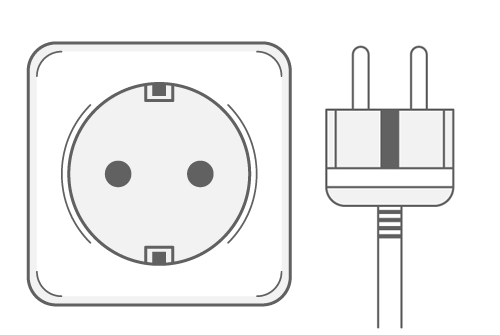


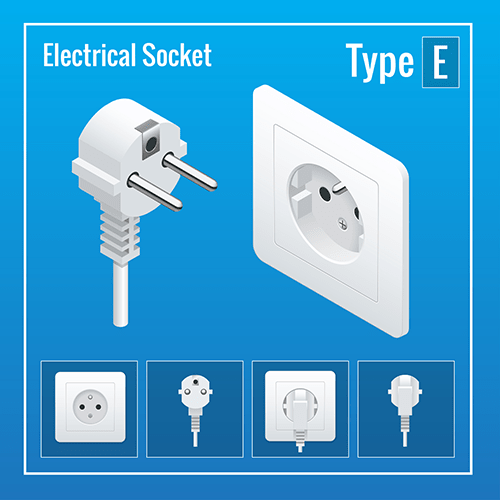


The standard voltage in the Czech Republic is 230V and it has a 50Hz standard frequency. UK travelers can use their electric appliances, without any problems.
The Czech Republic uses Type E power plugs and sockets. This type of plug is of French origin.
Take care while handling rotating and moving electronics like shavers, clocks, and electric fan heaters. To be doubly sure, examine the appliance label. Some don’t require a converter. If the label mentions ‘INPUT: 100-240V, 50/60 Hz’ the equipment can be used in all countries. This is generally in the case of cameras, mobile phones, and laptops.



When you travel to the Czech Republic, begin your journey from Prague, one of Europe’s most captivating cities. Prague takes you back 500 years, as it unfolds Gothic architecture that can be traced back to the medieval era, with ancient castles, spires, and a vibrant city center.
Its location in Europe’s center has witnessed decades of warring armies, decadent dynasties, and plundering tribes. The castles, palaces, and chateaux are a legacy of this colored past. The sheer variety of these structures is stunning and embellished with opulent furniture.
For a taste of folk culture, visit Moravia and South Bohemia, especially during summer. You’ll come across traditional attire, folk song, and dance.
Beer lovers will feel like they’ve stepped into a goldmine. Apart from the famous Pilsner Urquell, the world’s best brews are produced in the Czech Republic. With traditional brewing practices being re-adopted, Czech pubs now have a variety of local brews on offer.
Some must-see attractions include the St. Vitus Cathedral which is over 600 years old, the Charles Bridge, the Prague Castle, the Prague Jewish Museum, The Strahov Library, and the Old Town Hall.
Other great locales to visit are Karlovy Vary, Plzen, Cesky Krumlov, Brno, Tabor and Mikulov.
The Czech Republic’s charms spread to its rural and urban areas alike. From leisurely walks to challenging hikes, strollers and hikers have plenty to explore with nature trails that take you through age-old castles and quaint churches. The best part is that refreshment is always close by, whether in the form of a foamy beer, a bowl of goulash, or a scrumptious Trdelnik roll.



The Czech Republic is located right in the center of Europe. It is landlocked and is bordered by Slovakia, Austria, Poland, and Germany. It spans over 78,864 sq km and its capital, Prague is the biggest city in the country.
Its location is strategic and is the convergence of some important land routes in Europe. Additionally, the Moravian Gate is the military connection point between the Danube and the North Eastern Plain.
Hills and mountains are dominant across the country. Waterways like the Elba and the Danube flow through the Czech Republic. The landscape is characterized by wide valleys, flowing rivers, dense forests, stalactite caves, and woodlands. It is also rich in restorative mineral waters and healing springs.



Most of the Czech Republic experiences a continental and humid climate, with warmer summers and chilly winters. In January, temperatures range from 22F to 32F, while July averages a low of 56F and a high of 76F.
Its rainfall is distributed throughout the year and the humidity is around 80 percent. It snows lightly during January and February, but the high humidity in the air makes the winter cold piercing.
November through March experiences fewer hours of daylight and is somewhat bleak when combined with fog. From mid-October until early April, the days are darker and visibility is low. Hence, drivers are required by law to drive with their headlights on, even during the day.



Czech food requires a re-evaluation of taste and mindset. With an abundance of fat and grease in most dishes, it isn’t food for the faint-hearted. Located at the crossroads of Europe, the cuisine reflects the influences of its bordering countries.
With imports like a roast goose from Germany, schnitzels from Vienna, and pickles and sour cream from the East, Czech food is heavy but not spicy or laden with herbs. The table is always full with generous servings of meat and starchy dishes.
Veprova s knedlikem a se zelim is one of the Czech staples. It is typically a roast pork dish accompanied by dumplings and sauerkraut. Another classic is the Svickova na smetane, which is beef sirloin in cream sauce. Svickova is a sauce created out of vegetables and cream and made dense with roux.
Goulash, also called gulas is consumed in plenty and is almost always served with a side of dumplings, garnished with onions.
If you need a quick pick-me-up, grab the Bramborak, a kind of potato pancake seasoned with garlic. The parek v rohliku which is essentially a hotdog can be easily picked up from kiosks that dot the country.
For drinks, you can’t leave without trying Czech beer brands like Pilsner Urquell and Budweiser Budvar. Wine aficionados will like the Moravian wine varietals and the wine that comes from the Melnik vineyards.
Desserts are sweet and full-flavored. Spoon up some Mazanec which is a sweet Easter bread created with a dough that is kneaded with lemon zest, raisins, and rum. Sink your teeth in some soft Livance, which are circular and soft crisp pancakes.



The Czech crown (koruna), abbreviated as Kc, is the currency of the Czech Republic. 100 hellers comprise one Czech crown, while the ultimate rate is always rounded off to the nearest value.
When you travel to the Czech Republic, you can use debit and credit cards quite easily, particularly in cities like Prague, Ostravo, and Brno.
Visa, Mastercard, and American Express are accepted at stores and for withdrawals at ATM machines. Cards are accepted in hotels, superstores, stations, and restaurants in Prague. However, smaller eateries and bars accept cash only.
The main language spoken in the Czech Republic is Czech and it is also its official language. The language is West Slavic and bears influences of Latin and German. The language has similarities to the Slovakian language and many English words have been adapted into the Czech language that is spoken today.
The language is quite difficult to learn, and not used anywhere else in the world. But you won’t experience difficulties, at least in Prague because the people there can communicate in English.
The Czech language used in modern times is intriguing, rich, and complex. There are numerous ex-pats who live in Prague, totaling around 200 thousand foreigners, from Ukraine, Russia, Vietnam, and Slovakia.
Most Czechs can speak fluent English, while the other popular languages spoken are German and Russian.



When you travel to the Czech Republic, pack some smart casual clothes. T-shirts and jeans are acceptable, with the majority of locals and tourists opting for dark blue or black denim.
Don modest attire while visiting the churches and if you want to stroll the streets or eat off-street carts, carry a jacket or sweater because it can get chilly. You don’t need to carry swimwear if you are only traveling to the cities.
Choose flatter shoes instead of heels as most of the roads are cobbled. Some nightclubs don’t permit sneakers. The weather can be unpredictable, so layering is advisable. The summer months of June, July, and August are hot, so carry sunglasses, a hat, and sunscreen.
The cooler months of November, December, January, and February are chilly and snowy, so carry a thicker coat, gloves, and ear-muffs.



In the Czech Republic, family values and family are given prime importance. The Czechs are fairly private people unless you are known to them. A sense of formality prevails in their day-to-day interactions. Once you get closer to the Czechs, they may tend to open up a bit but usually, they are never loud or overly emotional.
While they are always reverent and polite, they are on a first-name basis only with relatives or friends. Most greetings are formal and involve a handshake.
While visiting, you may give flowers but always odd numbers and never 13 as it is considered ill luck. If you are visiting someone’s home, dress decently, arrive on time, and avoid discussing business as Czechs tend to separate their business and personal lives.



British citizens holding a UK passport don’t need a visa to travel to the Czech Republic. There are quite a few non-EU nationals who reside in the UK that still need a Schengen visa to travel to the Czech Republic.
UK citizens can travel to the Schengen areas for up to 90 days without a visa, in a 180 day period. Your passport could be stamped at the entry and exit points. You may also require to produce a return ticket or show proof that you have sufficient funds for your stay.
Ensure that your passport is valid for at least 3 months from the date of planned departure from the Czech Republic and less than 10 years old.






The standard voltage in the Czech Republic is 230V and it has a 50Hz standard frequency. UK travelers can use their electric appliances, without any problems.
The Czech Republic uses Type E power plugs and sockets. This type of plug is of French origin.
Take care while handling rotating and moving electronics like shavers, clocks, and electric fan heaters. To be doubly sure, examine the appliance label. Some don’t require a converter. If the label mentions ‘INPUT: 100-240V, 50/60 Hz’ the equipment can be used in all countries. This is generally in the case of cameras, mobile phones, and laptops.
Travel related news, information and inspirational articles and videos for travellers booking flights or holidays to Czech Republic. Ask questions about travel in Czech Republic and get answers from Czech Republic experts
NEWS
Inspiration, Information and Travel Guides
MEET THE Czech Republic EXPERTS
If you are looking to book a holiday to Czech Republic or needs some help and advice planning travel to Czech Republic then contact one of the UK based independent travel agents that specialise in Czech Republic itineraries.
FEATURED VIDEOS
Your Travel Questions Answered
Ask any travel related question and get an answer from one of our experts that will provide you with an answer from their personal experience
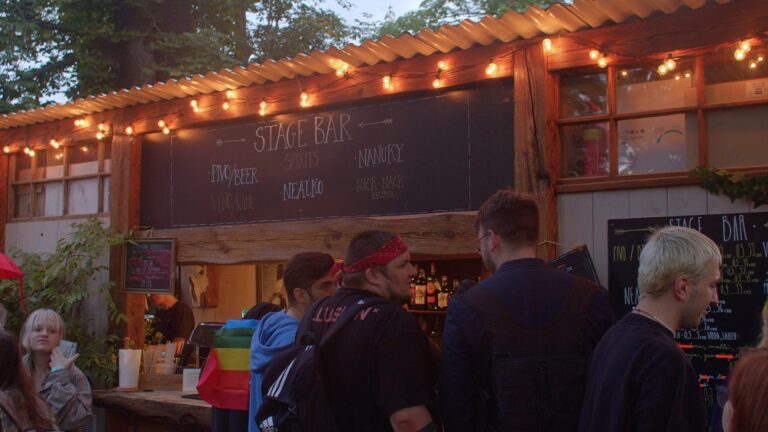

I want to be able to walk to everything and enjoy the nightlife. Where should I stay in Prague?
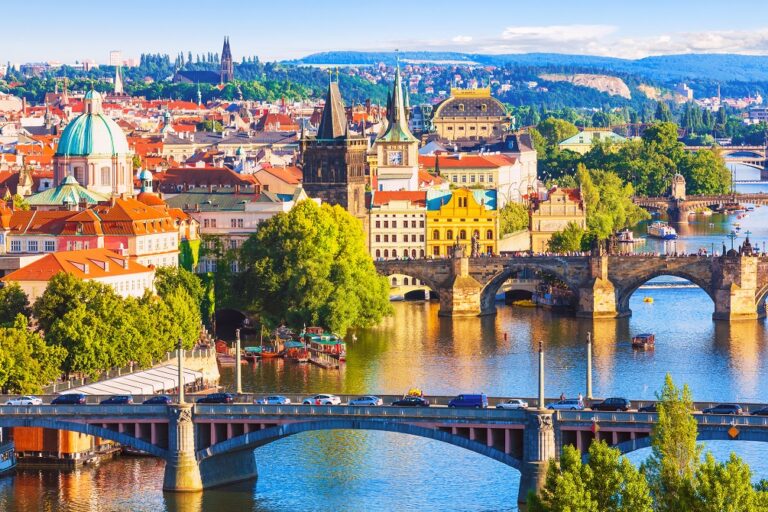

I have never been to Prague so I am really excited for my upcoming trip. What are the ‘must-see’ activities I need to do?

